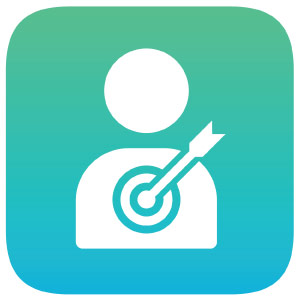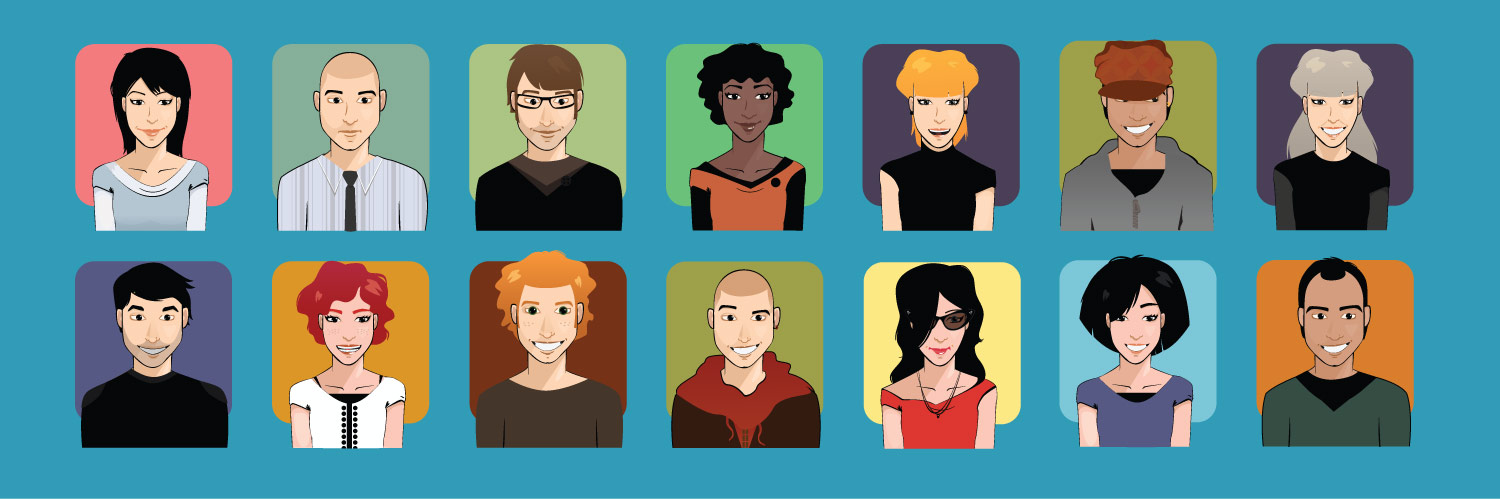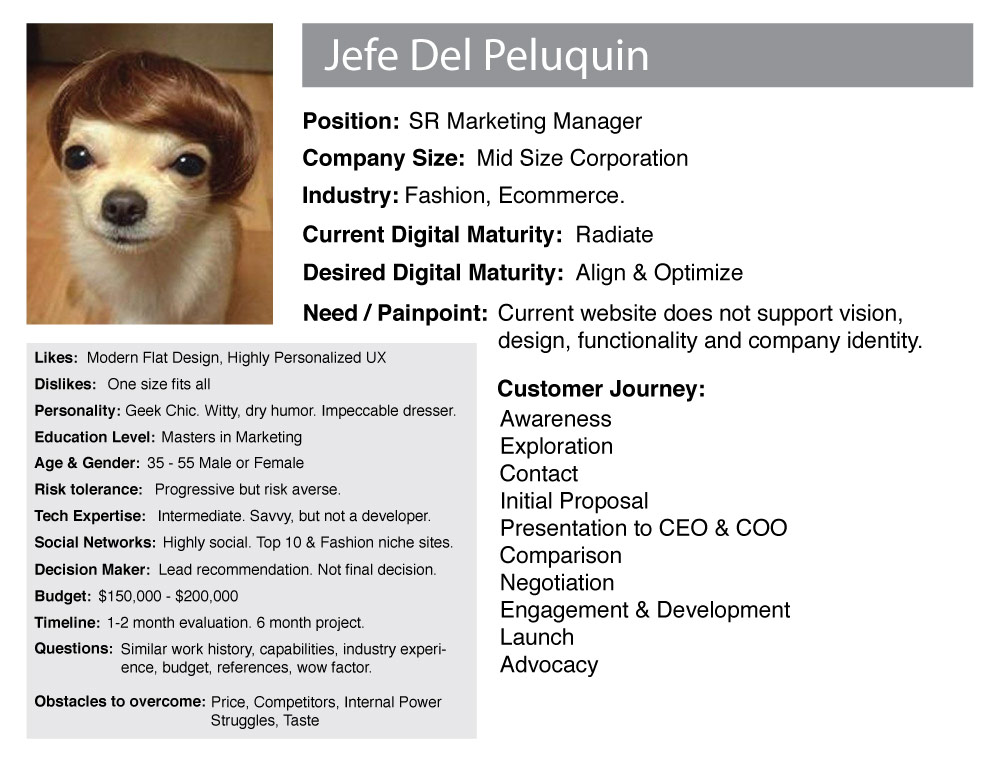
Sometimes it is difficult for entrepreneurs to narrow down their target market. But, if you try to sell everything to everyone, no one will buy anything. Every person who decides to buy from you is an individual person with specific needs. It is the job of your marketing to connect with that person. To understand them and their needs and to provide a solution that they believe will fill their needs.
The key here is specificity. Using generalized messages for a general audience, is much less effective than if you create specific messages to reach specific audiences.
The fact is, depending on what you are selling you may need to use different marketing strategies to effectively sell to different groups of customers. Your product or service pages (also known as your money pages) may be general… but your adveritisng and landing pages should be very specific to help you quickly create the strongest possible connection with each person when they first get to your site.

Your ability to create a meaningful connection with prospective customers can be the difference between a 0% conversion rate and a 10% conversion rate. So, in this section we will attempt to get to know your target customer in a way that will help you create marketing that will speak to your prospective customer on a meaningful and personal level. We will be creating your customer personas. A customer persona is an in-depth description of a fictional character who represents the average person in your target market.
This process is fairly easy and actually quite fun! If your business serves a very small and specific niche, then you may only have one customer persona to create. If your business serves a wide variety of clientele, then it may be tempting to repeat this process numerous times. However, it is recommend that you start with no more than 3-4 customer personas. Starting with more than 3-4 different customer personas can be overwhelming. So, choose the 3-4 personas that you will have a combination of the highest conversion rate and largest market size and begin with those.
Remember to use the Business Blueprint Workbook “Customer Personas” section to keep track of your answers. To create more than one customer profile you can simply copy and paste to create additional “Customer Personas” or download the standalone “Customer Personas” document. Once your customer persona is complete you should give it a name and photo and hang it on your wall along with the list of personality traits that describe that persona. This will become invaluable as you create every marketing strategy and the content to support it.
When making customer personas the first thing that you must consider is; what questions are relevant to your prospective customers and their customer journey. The purpose is to end up with a profile that will allow you to create content messaging and marketing materials that will speak directly to the type of customer you are targeting. Therefore, when you look through the questions below, keep in mind that these are just example questions. Not all of these questions may be relevant to your specific business, and there may be relevant questions that do not appear below. Feel free to create your own questions and disregard ones that do not apply. This is about making sure you and your team really understands the specific audience(s) your business is targeting and the products or services you are selling.
1. Age:
Be specific as possible. Remember that you may have different groups within the same age range.
2. Gender:
Does this matter? If it does, think about how and why.
3. Income:
Differences in income can obviously have a wide range of effects on purchasing decisions.
4. Education Level:
High School, Home School, Technical School, Some College, College Degree, Advanced Degree, Still In School
5. Personality Type & Style:
Are they fun, extroverted, adventurous, romantic, impulsive, optimistic, analytical, skeptical, pessimistic, introverted… how would you describe them. Are they on the cutting edge of fashion and trends, a trend setter, a leader, do they care about trends and style at all or are they set in their ways? Do they like or fear change?
6. Risk Tolerance:
Are they thrill seekers who are likely to take chances or are they cautious and calculated in their decisions?
7. What motivates them?
Are they motivated by fear? Are they motivated by inspiration and idealism?
8. Location:
Is location important? Define how their location could affect their decision making.
9. Likes:
What types of things are they drawn to? How can you play on their emotions? What types of incentives (such as bonus's, gifts or contest prizes) would they be likely to respond to?
10. Dislikes:
What repels them? While this won’t pull them in, perhaps it could push them in. What types of incentives, bonus's, gifts or contest prizes would not work well on them?
11. Recreational Activities:
What types of activities do they enjoy?
12. Online Habits:
What are they doing on their computer most of the time? We will want to leverage those channels to connect with them.
13. Social Networks:
In the Social Media section we will take a look at the demographic profiles for different social networks, but what do you expect from this group? Facebook? Twitter? LinkedIn? Google+? Pinterest? Tumblr? SnapChat? YouTube?
14. What is their title? Can they make a decision or do they need approval from someone else?
You must know what the decision making process is so that you can either push for a decision or become their partner in the situation.
15. What is their need / pain point?
What problem are you solving for them? Is it a desperate need? Is it a want or a nice to have? How urgent is the situation? How can you build urgency?
16. What is the customer journey / buying process?
Map out the customer journey / buying process. Think through this buying process for every different persona that you will be targeting. All marketers know that the B2B and B2C buying processes are very different. They go through different stages because they have different needs, requirements, use cases and evaluation processes. Often in the B2B realm, the person who initiates contact with the company isn't the ultimate decision maker and the purchase decision may require vetting by a committee or multiple levels of management. Whereas, a B2C buying cycle may be a much shorter cycle with evaluations and purchasing decisions often happening in one visit. With each persona that you create it is extremely important that you map out their buying cycle, that you anticipate their frame of mind, their questions, requirements and needs at that point in the buying cycle so that you can offer the right information at the right time and move them to the next step. This is true whether the evaluation and buying cycle takes place in one visit or over a period of several months. Map it out and be ready to create a customer journey on your website that will give your visitor the experience that they need to become a customer.
Example Customer Journey:

17. What questions are they likely to ask?
All customers have questions. B2B customers will tend to have much different questions than B2C customers... but the common thread is that all customers will have questions. These questions will be relevant to the product but more specifically how the product meets their personal needs.
A customer evaluation process will often include product comparisons, cost, delivery, warranty and questions related to every use case.
Website visitors might not voice those questions to you, but they are certainly using these questions to evaluate your products and services and looking for answers on your website. That is why you should anticipate every possible question and have a great response. You want to always be anticipating and answering the right questions at the right times. Most of these questions you can probably brain storm, but it is also very important that you listen to people and take note of the questions that they have about your business when you are talking to them.
There are likely to be different types of questions at different stages in the customer journey / buying process. So it may help to map your questions to different stages in that customer journey / buying process because it's not just about giving them answers to every question... it's about answering the right question, at the right time.
18. What would stop them from buying?
Are there potentially an red flags they are going to be looking out for?
19. Risk tolerance:
Will they react to an “Act Now” call to action? Will they step up to a challenge? Or, are they specifically looking for something that is very safe and reliable? This is important to know when crafting a call to action.
20. What is their level of technical expertise?
Do they want to hear technical specs and details or do they just want you to solve a problem that they themselves don’t really understand?
21. Are they likely to become repeat customers? How often?
What is the potential lifetime customer value and how can you cultivate that long term relationship? What will keep them coming back?
22. Are they likely to recommend your business to others?
Do they have the potential to become a brand evangelist for you? How can you motivate them to display their pride in your brand?
23. Give this group an avatar with a name and picture:
It can really make it much easier for your team to get to know each different customer group and to keep the target audience in mind when they are creating content if you personalize each group with an avatar. Just go to Google Images and find a picture of a person who seems to represent that group well and give them a name to match.
How deep these go should be based on how personalized of an experience you are trying to create on the site and how you intend to drive traffic.
Building a generalized core of content is a good primary goal and supports word of mouth traffic.
Highly targeted content improves ROI from advertising and marketing.
Building lots of niche supplemental content around core topics is a fundamental driver of SEO and can support nuanced conversion funnels.
Ultimately, we just want to create content and user experiences that effectively move each visitor to the next step in their journey to becoming a customer.
You may be planning on starting with the higher level generalized content and will consider building supplemental content and tailored user experiences over time. Still, going through this now will help us identify keywords, niche markets and the types of content that the site needs to be able to support… and create a plan for bringing it to life.
The information on the user personas should reflect everything that could potentially help you better understand the perspective of your customer. So the questions and the ways that the information is presented, whether you use paragraphs, short written answers, or more info graphic type elements like charts, graphs and iconography is entirely up to you.
Below is one example of a very basic fictitious persona… but again, once you have identified the important data points that will be beneficial for your business, then something cooler can designed.
Example Of Final Customer Persona

Now obviously, all of the information on this example has been made up. But, you need to really think about your actual customers and talk to the employees that have met with and dealt with your customers the most. Treat this like an actual consumer study. Don’t just make it up. Use data. Put out some surveys. Gather some real data. Talk to your sales guys. Look at the differences between deals that you’ve won and deals that you’ve lost and figure out why. That is how you plan to win more deals in the future.
The deeper you go the better the end result will be… but even if you just go through it with your team as a gut feeling exercise for one hour. The info should give us some insight and inspiration when finalizing the site map.
Once you have gone through this exercise and we have completed the competitive analysis… we will use this information to prioritize the content, come up with some content assignments, do some keyword research, then the content gets written (or perhaps just moved from an old site and optimized along the way). Those are topics that we will go over in upcoming courses.
So, that’s the beginning of how the content part of the project will begin to take shape.
